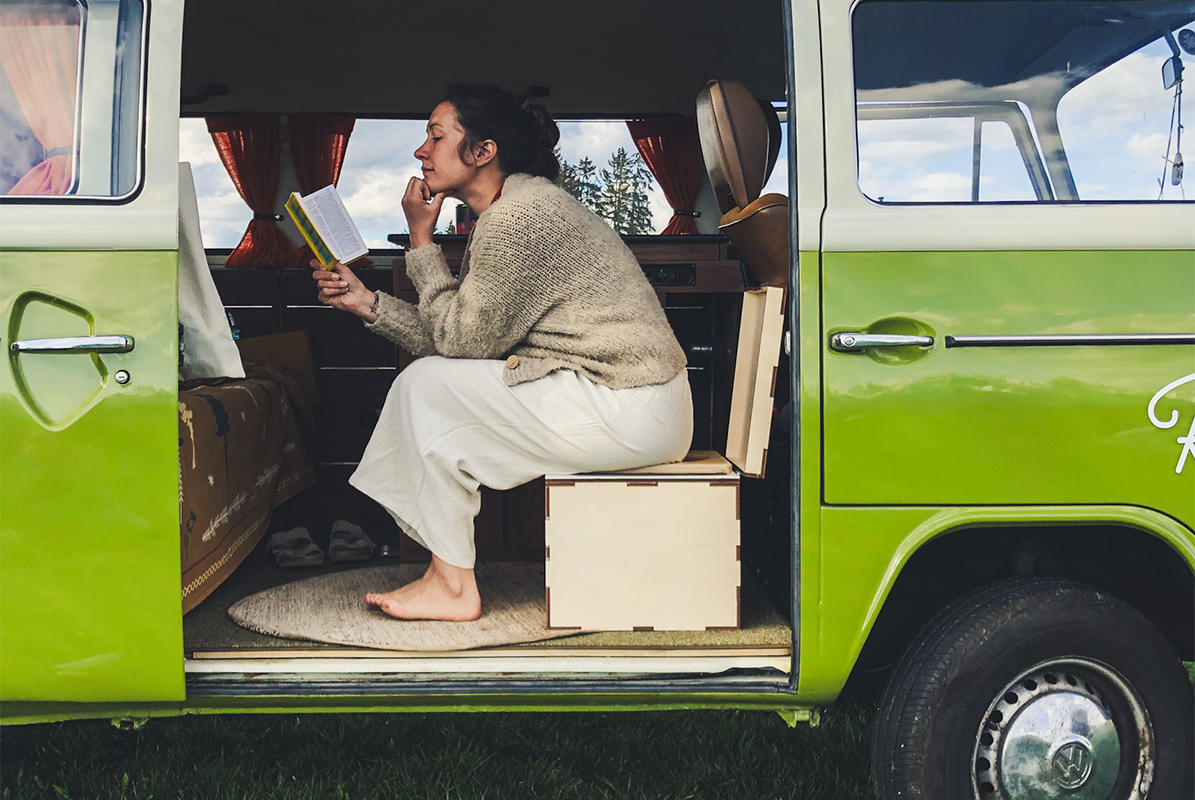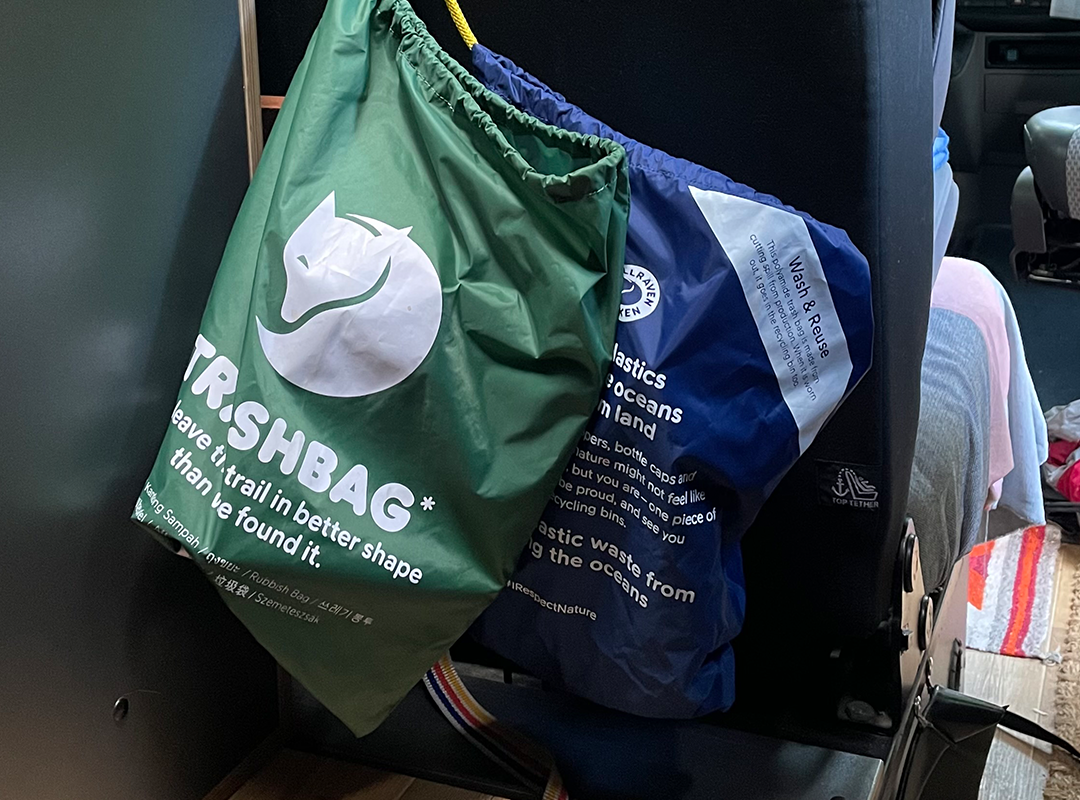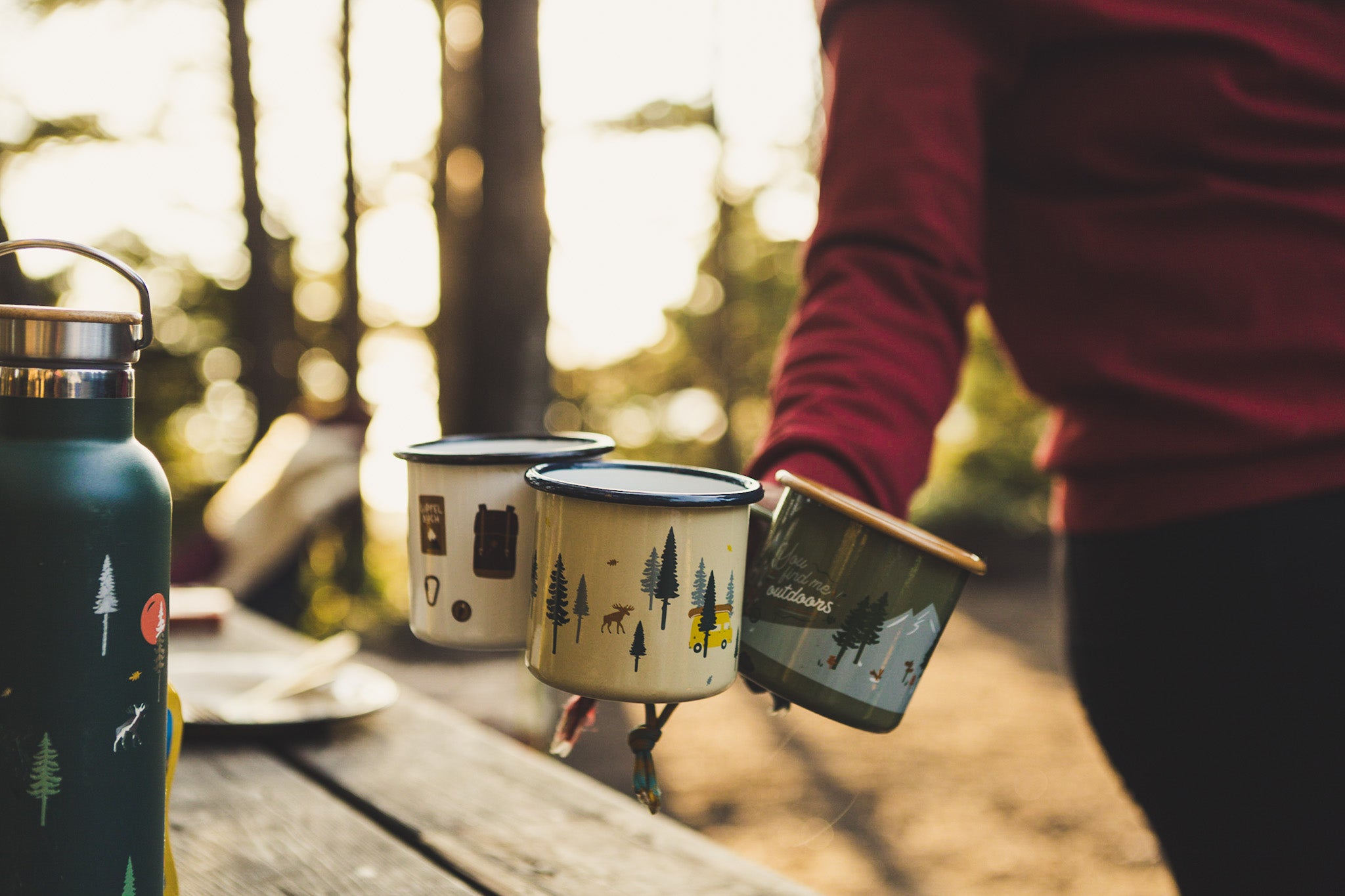Some have it and some don’t,
We don't want to miss it: The Vanklo
Do you need a toilet in your camper?
In this blog post, we would like to look at our toilets in the camper and give you an overview of why we decided to use the dry separation toilet, explain whether the dry separation toilet really doesn't smell and how to use a dry separation toilet correctly.
When we were travelling as a couple, we didn't have a toilet on board and so in civilised countries the first step in the morning was often: KK - coffee and toilet. That meant we usually walked into a café, ordered an espresso and a cornetto in Italy and went to the toilet there. Lotta needed her morning round anyway. So we didn't really miss a toilet, because it was an uncomfortable idea to have one somewhere in the small VW bus.
When it was time to convert the Sprinter and Leo was already born, we wanted to always have a toilet within reach so that we wouldn't have to rush to the toilet in the morning with the child.
Chemical toilet or composting toilet?
So in 2019, our first toilet was a chemical PortaPotti, although we quickly switched from chemicals to microbacteria. Although we loved the freedom of the toilet from the start, other inconveniences and problems quickly arose. Emptying it, for example, is really not nice, not clean and, above all, not flexible. The eucalyptus smell, which was mixed in with the microbacteria as a fragrance, quickly became the epitome of going to the toilet and we developed an aversion to it. Lifting the weight of a full PortaPotti out of our small wet room and lugging it across the entire kitchen unit is not only unappetizing, but also damn heavy.
Fortunately, 2020 was the beginning of small, mobile separation toilets or composting toilets. The principle is very simple: the liquids are separated from the solids and should smell less or not at all. In general, this is of course also the most environmentally friendly way, because neither chemicals nor water are needed. Of course, the very first thing that came to our minds was the smell of bad-smelling manure or the lack of hygiene when dealing with feces, but we really wanted to try it out and see for ourselves.
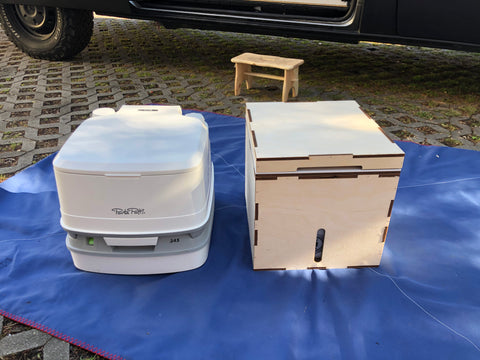
Why we chose the dry separation toilet
We chose the Kildwick Microloo because it fits perfectly into the PortaPotti drawer and we didn't have to change anything in the van. Disposing of the dry separation toilet is super easy, clean and flexible. You can dispose of the solid waste in almost any general waste bin. The liquid tank can be poured into any normal toilet. And that answers the question: Where do I empty a dry separation toilet?
Why is the dry composting toilet sustainable?
There are several reasons why a dry separation toilet is sustainable. Firstly, it is the material; the body of our Kildwick Microloo is made of wood, only the bucket and the tank are made of plastic. We have been using our toilet for 4 years now and it is still in great condition.
The dry separation toilet does not require any additives. The liquid tank is emptied as soon as it is full and rinsed with water. For the solid waste container you need bedding made of wood or straw (available in every large supermarket or pet store for small animals) and a plastic bag, which of course cannot be reused.
Since you don't need any water in the whole process (except for regular cleaning), you save this otherwise scarce resource and it's comfortable to sit on a real wooden toilet seat, which makes you feel even more at home. All in all, a great all-rounder.
How often can you use a camping toilet?
Our Microloo has a 5 l liquid container and a 5.5 l solid container, which is enough for two adults for about 2 days. If you have more space you can of course also go for larger versions, Kildwick has several versions on offer.
Does the dry composting toilet smell?
If you use the dry separation toilet correctly, your camping toilet will not smell.
The solids container
Of course, the evaporation of the solids smells for a short time at the beginning. We fill the solids container generously with small animal litter (straw or wood chips) and cover each poop very thoroughly (we have also tried cat litter, but it doesn't work nearly as well). The straw should be able to absorb the liquid. We like to use dark garbage bags, by the way :-)
Tip: Don't throw away the coffee grounds from the mocha, but pour them into the solids tank, because coffee neutralizes odors.
The liquid container:
We use vinegar (clear vinegar essence) from a spray bottle every time as a rinse and the vinegar removes the urine smell 100%.
Our conclusion
What is our conclusion after more than 4 years of using a composting toilet full-time:
We love our dry separation toilet from Kildwick and don't want to miss it or replace it. Having your own camping toilet saves you stress and hassle - especially with children - and it's also a game changer during periods when I'm on my period.
We have installed our dry toilet in a wet room, so there is also a "quiet place" in our camper and sometimes it is very relaxing to be able to close the door behind you in such a small space.
If you want to know more about our camper conversion, click here for the room tour .

